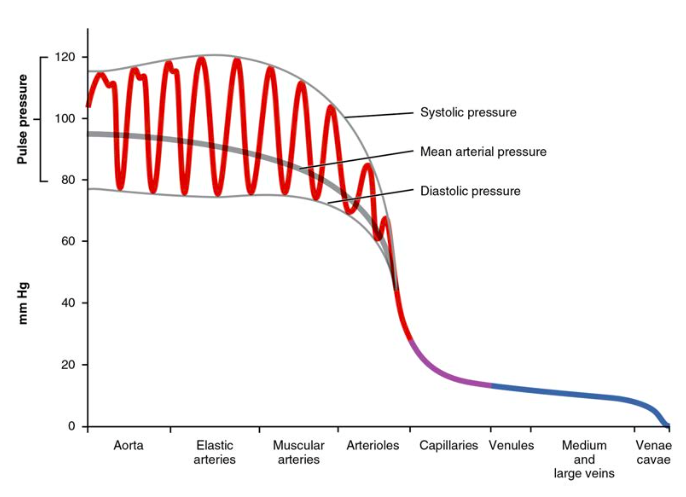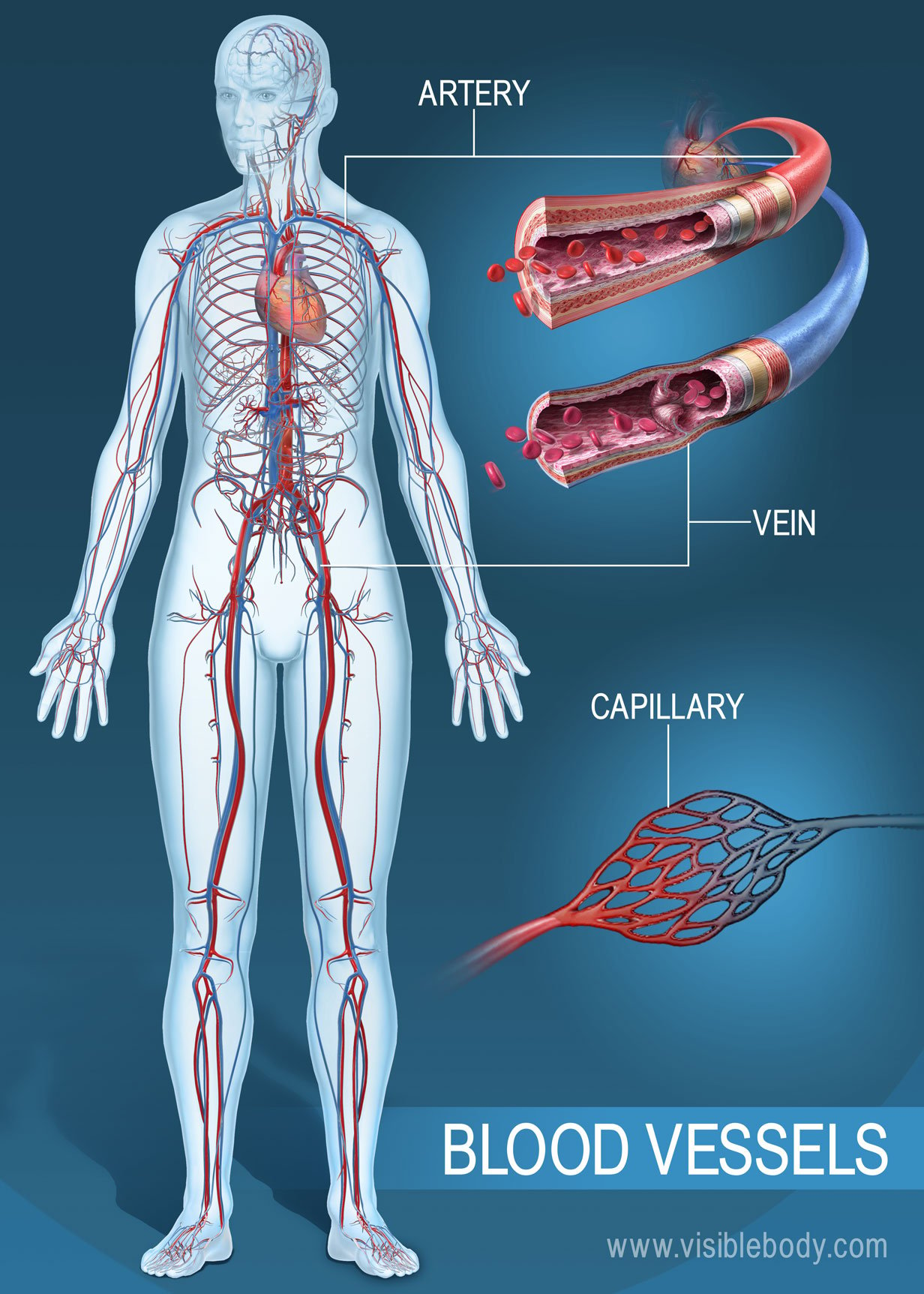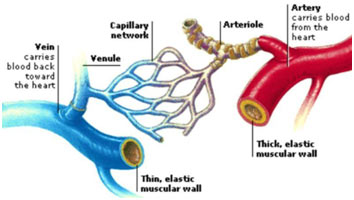Explain How Blood Pressure Differs in Veins Arteries and Capillaries
The heart pumps the arterial blood rhythmically giving the arteries a. In short - Arteries are strong thick vessels that can carry blood at high pressure.

Blood Flow Blood Pressure And Resistance Anatomy And Physiology Ii
The capillaries connect the two types of blood vessel and molecules are.

. Blood is pumped from the heart in the arteries. What two factors influence cardiac output4. Vein walls are thinner and less elastic than artery walls.
The pressure pushing blood through them is less. The blood pressure is high in arteries. The flow of blood is slow in the veins.
Because blood gushes from the heart to the artery under a very high pressure. The pressure of the blood flow in the body is produced by the hydrostatic pressure of the fluid. In fact there are valves within the lumen of veins to prevent the backflow of blood.
Its over 60000 miles long and is made up of three main types of vessels. Of veins BP. The venules carry out the blood into the veins which carry it back to the heart through the venae cavae.
The BP is low in the veins. Arteries are the largest blood vessels with the thickest walls and capillaries are the. Artery An arteries job is to carry blood at high pressure from the heart to the rest of the body.
It is returned to the heart in the veins. Of arteries BP. Capillaries transport blood between arteries and veins.
The pressure in the arteries differs between when the heart contracts and when it expands the systolic and diastolic pressure respectively. Image result for Describe how blood pressure differs in the arteries capillaries and veins. The pressure of the blood returning to the heart is very low so the walls of veins are much thinner than arteries.
Systemic arterial blood pressure is most commonly called as blood pressureHowevermeasurement of pressures in the pulmonary vessels and venous system plays an important role in intensive care medicineBlood pressure is influenced by the heart rate the amount of blood pumped by the heart and the ease with which blood travels through the. Arteries are the blood vessels that carry blood away from the heart where it branches into even smaller vessels. Liquid in the plasma also passes outThis forms tissue fluid bathing the cellsWaste products from the.
Describe the mechanisms that assist in the return of venous blood to the heart. Veins are weaker vessels that carry blood at lower pressure and have valves in them. The blood pressure in the veins is thus much less.
This allows them to carry blood that is at a high pressureCapillaries are tiny thin walled vessels that form a network to take blood through the organs and other body tissuesVeins contain valves to prevent the backflow of low-pressure blood. Up to 24 cash back As blood enters capillaries from arterioles small arteries it slows down. The blood flow is slow in capillaries.
Arteries carry blood from your heart to your organs. Capillaries are very small and have a high surface area to volume ratio. What factors determine vascular resistance6.
1 Answer to Describe how blood pressure changes in the arteries capillaries and veins. Direction of carrying blood is different for arteriesveins and capillaries. Describe how blood pressure differs in the arteries capillaries and veins 3 from BIO 202 at Northland Pioneer College White Mountain.
In fact the blood pressure is so high that their walls are highly thickened. Arteries carry oxygen and nutrient-rich blood away from the heart to all of the bodys tissues. Veins-Veins have low blood pressure for they bring deoxygenated blood back to the heart.
Also because the blood pressure is small in the veins it is not going to be enough to return all that blood to the heart. Distinguish between filtration and reabsorption2. As the pressure of the blood is high.
Arteries capillaries and veins. The blood pressure BP differs based on the amount of blood which flows through the body at a given instant of time. The wall is thick in arteries.
What factors contribute to blood flow back to the heart3. Keeping this in view how do capillaries affect blood pressure. The blood flow is rapid in the arteries.
Veins carries blood in opposite directionthe tissues do not pump the blood like the hearttherefore arterial blood pressure is greater than venousArteries receive blood View the full answer. This allows substances in the plasma as well as O2 from red blood cells to diffuse through the capillary wall into the surrounding tissues the capillary wall is thin and permeable. The blood pressure is always falling in capillaries.
In fact the blood could easily back up or collect in these vessels. Describe how blood pressure decreases as distance from the left ventricle increases5. Capillaries are tiny blood vessels that connect arteries and veins.
There are no semi-lunar valves present in capillaries. Capillaries-Capillaries have negligible blood pressure for they are responsible for diffusion. How do arteries capillaries and veins differ in function1.
Arteries have the highest BP. Arteries are the higher-pressure part of the circulatory system as they are getting blood from the heart. Explain how mean arterial pressure is calculated.
Finally the smallest arteries called arterioles are further branched into small capillaries where the exchange of all the nutrients gases and other waste molecules are carried out. The blood is certainly much less likely to burst through walls of the veins than arteries. It is this pressure shift that can be felt as a pulse.
Veins carry blood under low pressure from the capillaries and return the blood to the heart. Their walls are very thin. The vein walls have thinner muscular walls than arteries and have a wider internal diameter.
Veins can differ considerably in size. Veins are the blood vessels present throughout the body.

Ak Lectures Blood Pressure In Arteries Veins And Capillaries



Comments
Post a Comment